 |
Events |
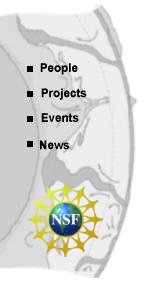
|
- AGU Fall Meeting 2022
- Workshop on
Computational Ab initio Quantum Thermodynamics (Nov. 28 - Dec. 1)
- Visit of Omololu Akin-Ojo:
Bringing Research Excellence To Africa
- Materials Simulations in
Earth and Planetary Sciences Seminar Series
- International Conference in
Computational Physics (CCP'22)
- Gordon Research Conference: Research
at High Pressure 2022
- International
Workshop on Recent Developments in Electronic Structure Methods (ES22)
- 2022 US-Africa Initiative in
Electronic Structure Workshop
- APS March Meeting 2022

Columbia Global Center,
Nairobi, and Technical University of Kenya
Organizers: Renata Wentzcovitch,
George Amolo, Michael Atambo
Click to preview the
[schedule in pdf]
Click to preview the
[related resources]
Day 1 (Nov. 29)
| Kenya Time |
Sessions |
| 08:45 – 09:00 |
Welcome |
| 09:00 – 10:00 |
Renata Wentzcovitch – Thermodynamics with QHA overview (slides) |
| 10:00 – 11:00 |
John Perdew – DFT Introduction (video) |
| 11:00 – 11:15 |
Coffee break |
| 11:15 – 12:15 |
Pietro Delugas – Introduction to DFPT (video, slides) |
| 12:15 – 13:30 |
Lunch |
| 13:30 – 15:30 |
Pietro Delugas – Hands-on with QE SCF calculations |
| 15:30 – 15:45 |
Coffee break |
| 15:45 – 18:00 |
Qi Zhang – Hands-on with QE SCF calculations and EOS
Express workflow (slides) |
| 18:00 – 19:30 |
Dinner |
Day 2 (Nov. 30)
| Kenya Time |
Sessions |
| 09:00 – 10:00 |
John Perdew – DFT State-of-the-art (video) |
| 10:00 – 11:00 |
Pietro Delugas – DFPT and phonon calculations with the
Quantum ESPRESSO |
| 11:00 – 11:15 |
Coffee break |
| 11:15 – 12:15 |
Qi Zhang – The qha Python package (slides)
|
| 12:15 – 13:30 |
Lunch |
| 13:30 – 15:30 |
Pietro Delugas – Hands-on with QE and Phonon calculations
|
| 15:30 – 15:45 |
Coffee break |
| 15:45 – 18:00 |
Chenxing Luo – The cij Python package (slides, video) |
| 18:00 – 20:30 |
Reception at Columbia Global Center in Nairobi |
Day 3 (Dec. 1)
| Kenya Time |
Sessions |
| 09:00 – 10:00 |
Zhen Zhang – Phonon Quasiparticle Calculations (slides) |
| 10:00 – 11:00 |
Renata Wentzcovitch – Thermodynamics of and
thermoelasticity of spin crossovers (slides, video) |
| 11:00 – 11:15 |
Coffee break |
| 11:15 – 12:15 |
Zhen Zhang – The phq package (resources) |
| 12:15 – 13:30 |
Lunch |
| 13:30 – 15:30 |
Chenxing Luo – Hands-on with QE and thermoelasticity
calculations (resources, video) |
| 15:30 – 15:45 |
Coffee break |
| 15:45 – 18:00 |
Chenxing Luo – Hands-on with QE and thermoelasticity
calculations |
| 18:00 – 19:30 |
Dinner |
This virtual seminar series consists of talks on current applications of Materials
Simulations to Earth and Planetary Sciences. It meets on select Mondays at 3:00 PM ET.
Host: Renata Wentzcovitch, APAM and DEES, Columbia Engineering
Click to see the introduction.
This area of research has expanded dramatically in recent years and has become an integral part of
this research field. It is not an overstatement that the future of planetary sciences depends heavily
on the ability to simulate processes taking place on planetary interiors, e.g., the unveiling of the
internal structure of super-Earths. This seminar series aims to present state-of-the-art activities in
this area not just by computational scientists but also by experimental scientists willing to motivate
computational research in their respective areas of interest.
The attendance and speakers will be beyond Columbia University’s borders, and researchers from
prominent centers will be invited to participate and/or give invited talks. Computational studies of
planetary materials have focused to a great extent on very high pressures since this is the most
challenging condition for experiments. We hope to bring to the forefront and motivate more research on
lower pressures, e.g., < 10 GPa. This is a very challenging pressure range for materials
simulations for multiple reasons, e.g., the approximations used in simulations are less accurate at
low pressures, and the abundance of complex experimental information at these pressures forces
simulations to deal with controversial data.
- Sep. 12, speaker: Christine McCarthy, Lamont-Doherty Earth Observatory; video: Ice rheology applied to planetary bodies: what
we know and what we don’t know
- Sep. 19, speaker: Yang Sun, Department of Physics, Iowa State University and APAM, Columbia
University; video:Simultations
of iron in the Earth’s core conditions
- Oct. 3, speaker: Bijaya Karki, Louisiana State University; talk: First-principles
Computation of Earth’s Mantle Materials: A Review and New Perspectives
- Oct. 10, speaker: Shun-ichiro Karato, Department of Earth and Planetary Sciences, Yale
University; video: What do we want to learn
about the physical properties of super-Earths from theoretical mineral physics?
- Oct. 17, speaker: Ian Ocampo, Princeton University; video: Dynamic compression of iron oxides to
multi-megabar pressures
- Oct. 20, spealer: Dan Shim,
Arizona State University; talk: “Dissolution of Calcium into Bridgmanite and Disappearance of
Davemaoite in Warm Regions of the Lower Mantle”
- Oct. 24, speaker: Mark
Tuckerman, Chemistry Department, New York University; talk: “Simulation studies of molecule
and ion transport in hydrogen-bonded media”
- Oct. 31, speaker: Peter Kelemen, Department of Earth and Environmental Sciences, Lamont Doherty
Earth Observatory, Columbia University; talk: “Serpentines”
- Nov. 07, speaker: Baosheng Li, Stony Brook University; talk: “On the elasticity of serpentines”
- Nov. 14, speaker: Einat
Lev, Department of Earth and Environmental Sciences and Lamont Doherty Earth Observatory,
Columbia University
- Nov. 21, speaker: Yves
Moussallam, Department of Earth and Environmental Sciences, Lamont Doherty Earth Observatory,
Columbia University
- Nov. 28, speaker: Jie
Deng, Department of Geosciences, Princeton University
- Dec. 5, TBA
- Dec. 12, No seminar (AGU Meeting)
Organized by Renata Wentzcovitch, James R. Chelikowsky, Ellen Zweibel, Feliciano,
Giustino
Session “Earth: From Crust to Inner Core”, Discussion Leader: Renata Wentzcovitch
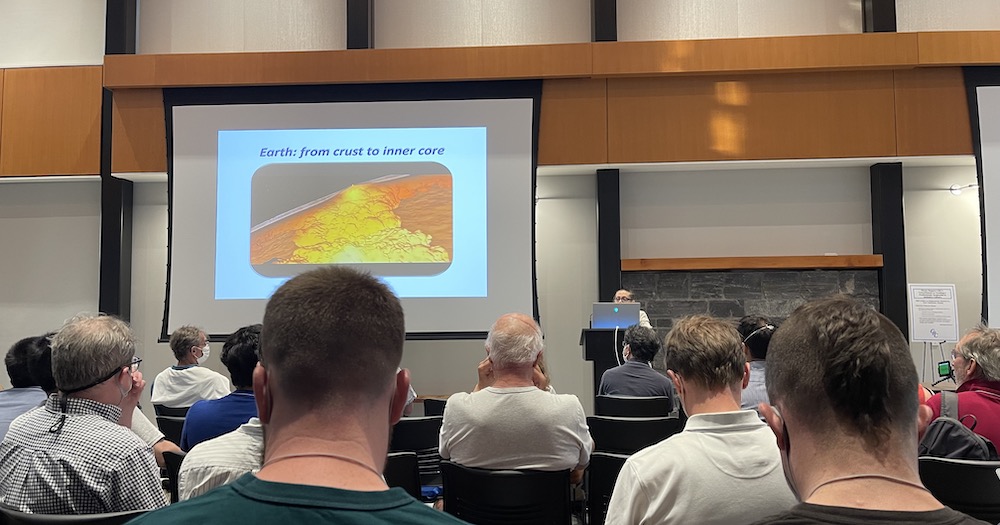
During the poster session
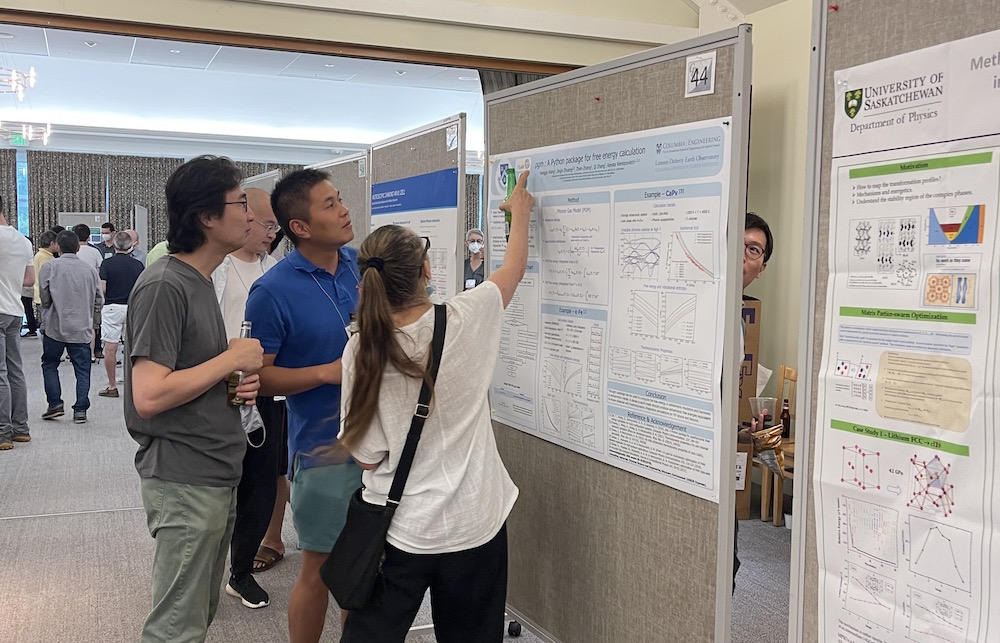
Co-organizers: Renata Wentzcovitch, Richard Martin, Omololu Akin-Ojo, Sinead
Griffin.
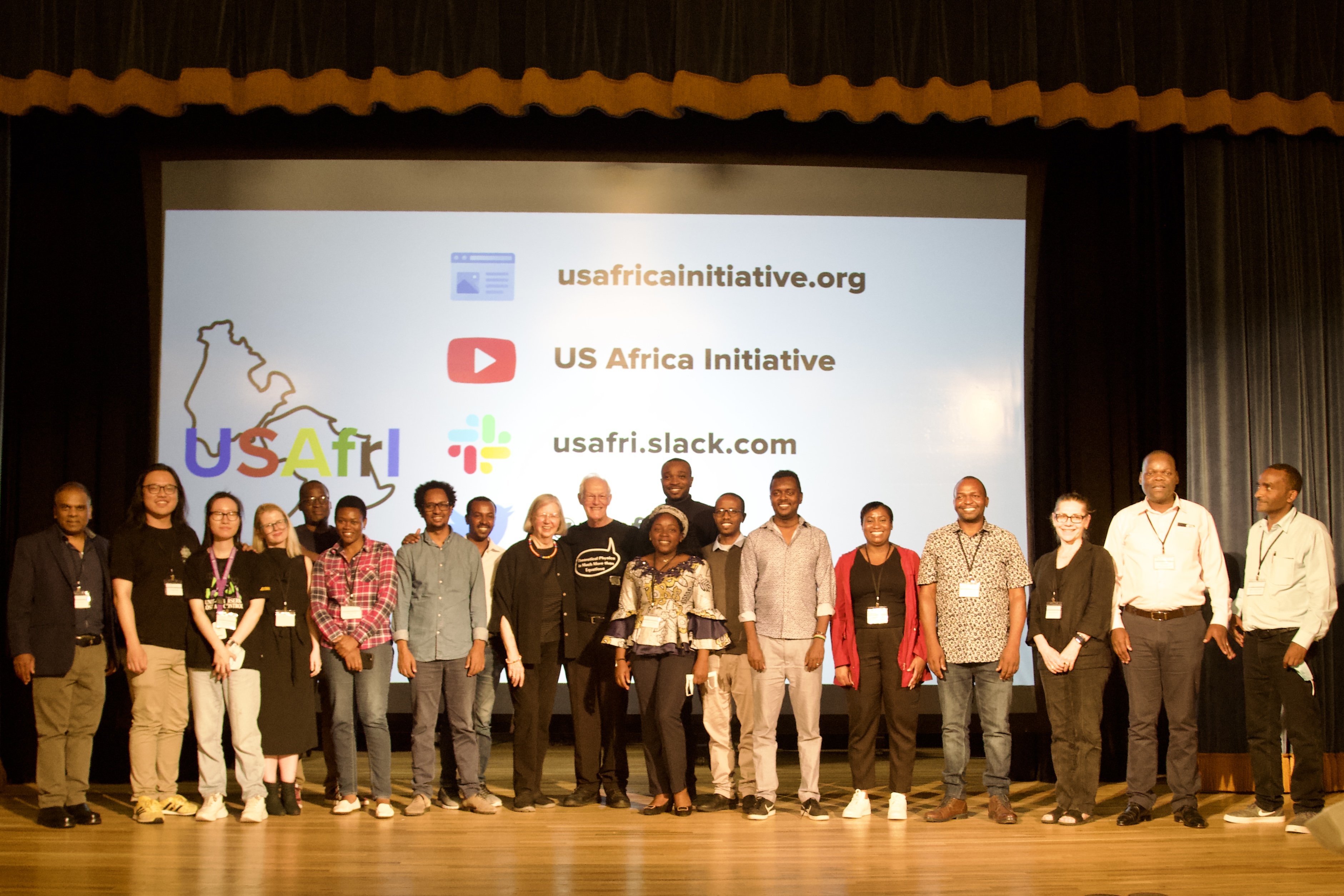 *Photo taken at ES22 (Jun-2-2022).
*Photo taken at ES22 (Jun-2-2022).
Mini Seminar by
Catherine and Olugbenga, June 14, 2022, at Columbia University
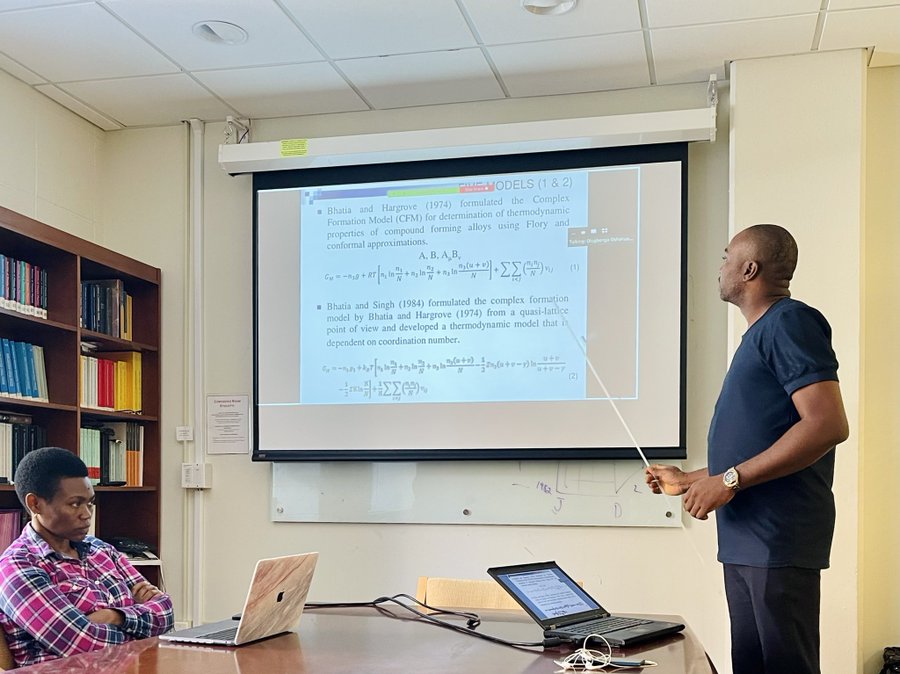
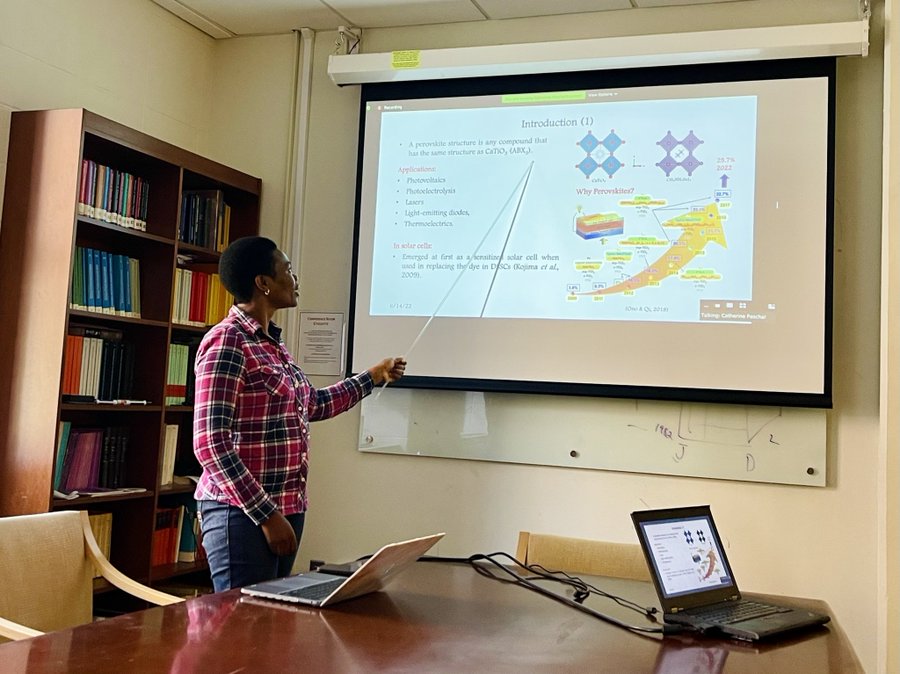
Photo with Catherine, Olugbenga, and Urban’s
Group
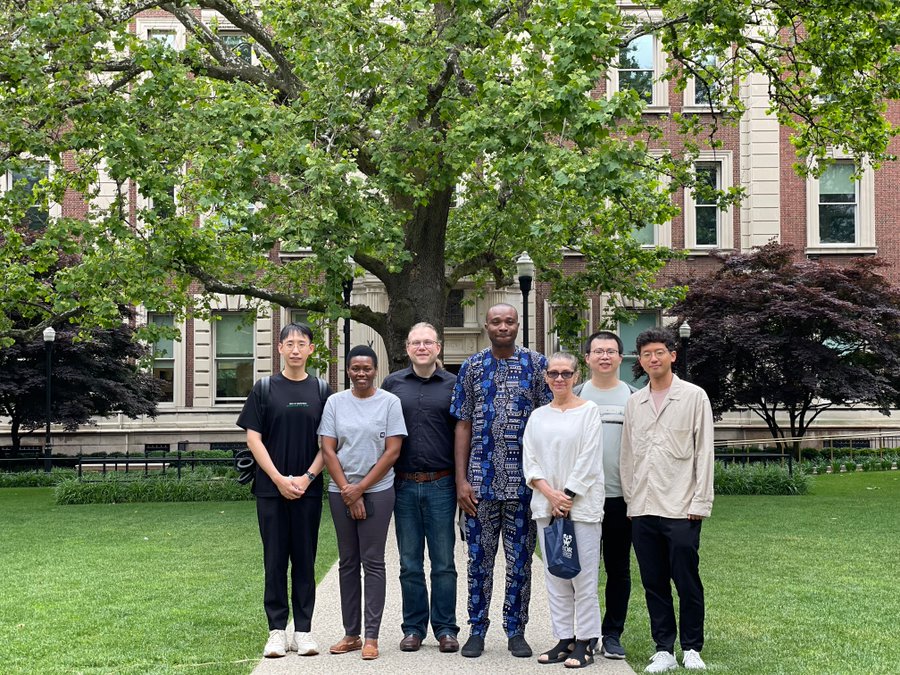
- Infrastructure For Computational Mineral
Physics
University of Minnesota
3-111 Keller Hall,
200 Union Street SE
Minneapolis, MN 55455-0170
Organizer:
- Renata Wentzcovitch (UMN)
Steering Committee:
- Renata Wentzcovitch (UMN)
- Artem Oganov (Stony Brook)
| |
Schedule
8/30
|
Speaker
|
Video
|
|
7:20 am
|
Breakfast
|
|
|
|
8:00 am
|
Welcome
|
Renata and Artem
|
|
|
8:10 am
|
COMPRES: Organization overview
|
Quentin Williams (UCSC)
|
part 1 part 2
|
|
8:25 am
|
COMPRES: planning for the next five years
|
Don Weidner
(Stony Brook)
|
part 1 part 2
|
|
8:40 am
|
First principles thermoelasticity of minerals
|
Renata Wentzcovitch (UMN)
|
part 1 part 2 part 3
|
|
9:10 am
|
Structure prediction: minerals, materials, and some new science ahead of
us
|
Artem Oganov (Stony Brook)
|
part 1 part 2 part 3
|
|
9:40 am
|
Break
|
|
|
|
10:00 am
|
An overview of the Minnesota Supercomputing Institute
|
Jorge Vinals (MSI)
|
full
|
|
10:30 am
|
Time dependent density functional theory in PARSEC and in the Quantum
ESPRESSO
|
Yousef Saad (UMN)
|
part 1 part 2
|
|
10:55 am
|
CIG: Overview of goals, implementation, and evolution
|
Peter Van Keken (Ann Arbor)
|
part 1 part 2
|
|
11:20 am
|
Cluster, surface, and bulk calculations in geochemical applications:
Challenges
in finding the right approach
|
Udo Becker (Ann Arbor)
|
part 1 part 2
|
|
11:45 am
|
Lunch
|
|
|
|
1:00 pm
|
Density functional theory for mineral physics
|
Don Truhlar (UMN)
|
part 1 part 2 part 3
|
|
1:25 pm
|
Interface between experiments and computations
|
Kanani Lee (Yale)
|
part 1 part 2
|
|
1:45 pm
|
Insights into the nature of hydrous ringwoodite from experiment and theory
|
Wendy Panero (Ohio State)
|
part 1 part 2
|
|
2:05 pm
|
Isotope signatures of high pressure / high temperature processes
|
Edwin Schauble (UCLA)
|
part 1 part 2
|
|
2:25 pm
|
Phase transitions in ice: a multi-level challenge calculation
|
Koichiro Umemoto (UMN)
|
full
|
|
2:45 pm
|
Mineral properties at high pressure using ab
initio methods
|
Li Li (Stony Brook)
|
part 1 part 2
|
|
3:05 pm
|
Break
|
|
|
|
3:30 pm
|
Computer simulation and visualization
studies of disordered and
defective systems
|
Bijaya Karki (LSU)
|
part 1 part 2
|
|
3:55 pm
|
Alloy theory tools for mineral physics
|
Dane Morgan (UW)
|
part 1 part 2
|
|
4:20 pm
|
Long break for dinner
|
|
|
|
6:45 pm
|
Evening discussion
Sample Themes
- The dream: uninterrupted funding for code development/maintenance/support.
- The other dream: hardware for code development and interactivity jobs
- Technical personnel
- Database development
- Specialized toolkits
- Tutorials, interships, travel grants, and other outreach activities.
|
|
|
| |
|
|
|
|
7:00 am
|
8/31
Breakfast
|
|
|
|
8:00 am
|
Transition metals in nature
|
Boris Kiefer
(U of NM)
|
part 1 part 2
|
|
8:25 am
|
DFT+U calculations in strongly correlated minerals
|
Matteo Cococcioni (UMN)
|
part 1 part 2 part 3
|
|
8:50 am
|
First-principles calculations of thermal conductivity of minerals
|
JJ Dong (Auburn U)
|
part 1 part 2 part 3
|
|
9:15 am
|
Computational Research: Reflections from PhD to Postdoc
|
Amy Bengtson (Ann Arbor)
|
full
|
|
9:30 am
|
Calculations of spin crossovers with DFT+U
|
Han Hsu (UMN)
|
full
|
|
9:45 am
|
USPEX - evolutionary crystal structure prediction
|
Andriy Lyakhov
(Stony Brook)
|
full
|
|
10:00 am
|
Break
|
|
|
|
10:30 am
|
A cyberinfrastructure for first principles calculations and searchable
databases.
|
Vlab (MSI)
|
part 1 part 2
|
|
10:50 am
|
Resources at the Minnesota Supercomputing Institute
|
Birali Runesha
(MSI) </a>
|
part 1 part 2
|
|
11:10 am
|
Discussion of wiki content
|
|
|
|
12:10 pm
|
Lunch
|
|
|
|
1:00 pm
|
Discussion, meeting summary, report outline, etc.
|
|
|
- Seminars Fall 2009
Description
Quantum simulations of materials and nano-scale processes are a fundamental research approach that
have infiltrated virtually all fields of chemical and materials sciences. This seminar series will
give an overview of the state-of-the-art in materials and nano-particle simulations and quantum
chemistry methods as well as their applications to materials and chemistry in a broad range of
thermodynamic conditions. This series will introduce students to this fast evolving field of research.
It will also cross fertilize theoretical and computational inter-departmental research on campus by
bringing together the faculty involved in related research areas. If appropriate, experimentalists
will be invited to present their work to stimulate computational research. The vast majority of
seminar speakers are UMN based researchers. It consists of one hour seminars once a week.
List of Talks of Seminars Fall 2009
| Date |
Location |
Speaker |
Title |
| 9/11/2009 |
Walter Library 402 |
Don Truhlar
University of Minnesota, Chesmistry
|
Density functional theory: New developments
|
| 9/18/2009 |
Walter Library 402 |
Renata Wentzcovitch
University of Minnesota, Chemical Engineering and Materials Science
|
Applications of density functional theory I: thermodynamic phase boundaries of silicate
minerals
|
| 9/25/2009 |
Walter Library 404 |
Traian Dumitrica
University of Minnesota, Mechanical Engineering
|
Understanding Nano-mechanical Response via Modeling and Simulations
|
| 10/02/2009 |
Walter Library 404 |
Ilja Siepmann
University of Minnesota, Chemistry
|
Structure, Solvation, and Phase Equilibria in Hydrogen-bonding Systems
|
| 10/09/2009 |
Walter Library 402 |
Jiali Gao
University of Minnesota, Chemistry
|
Quantum mechanical simulations of biological systems: From one electron to tens of thousands of
atoms
|
| 10/16/2009 |
Walter Library 402 |
Matteo
Cococcioni
University of Minnesota, Chemical Engineering and Materials Science
|
Extended LDA+U functional for covalent systems
|
| 10/23/2009 |
Walter Library 402 |
Chris Cramer
University of Minnesota, Chemistry
|
Activation of O2 and N2O by Mono- and Polynuclear Supported Metal
Complexes
|
| 10/30/2009 |
Walter Library 402 |
Ellad Tadmor
University of Minnesota, Aerospace Engineering and Mechanics
|
A unified interpretation of stress in molecular systems
|
| 11/06/2009 |
Walter Library 405 |
Richard James
University of Minnesota, Aerospace Engineering and Mechanics
|
Objective molecular dynamics
|
| 11/13/2009 |
Walter Library 402 |
Ryan Elliott
University of Minnesota, Aerospace Engineering and Mechanics
|
A Quasicontinuum for Multilattice Crystals Exhibiting Martensitic Phase Transformations:
Cascading Cauchy-Born Kinematics
|
| 11/20/2009 |
Walter Library 402 |
Koichiro
Umemoto
University of Minnesota, Geophysics
|
Applications of density functional theory II: H2O-ice
|
| THANKSGIVING |
| 12/04/2009 |
Walter Library 402 |
Darrin York
University of Minnesota, Chemistry
|
Multiscale simulations of chemical catalysis in strained electrostatic environments of RNA
molecules
|
| 12/11/2009 |
Walter Library 402 |
TBA
|
TBA
|
- Second Vlab Tutorial
2nd Vlab Tutorial on Computational Mineral
Physics
Jointly with CIDER and the
DEMOCRITOS Simulation Center of Italy
Kavli Institute, UC-Santa Barbara, 07/28 to 08/01, 2008
Organizers: Renata M. Wentzcovitch and Stefano de Gironcoli
The Virtual Laboratory for Earth and Planetary Materials, VLab, the Minnesota Supercomputing
Institute for Digital Technology and Advanced Computation (MSI), and the Italian National Simulation Center DEMOCRITOS announce a
1-week tutorial on first principles calculations. The tutorial will take place between July28 and
August 01, 2008, at the Kavli Institute for Theoretical Physics, UC-Santa Barbara as part of the
Cooperative Institute for Deep Earth Research, CIDER, 2008 program
The tutorial will consist of lectures on the theoretical foundations of first principles calculations
of structural, elastic, and thermodynamics properties of minerals at extreme conditions of pressures
and temperatures, and hands-on experience using the VLab cyberinfrastructure. The latter uses the
Quantum ESPRESSO as back-end computational package and has been developed to enable distributed and
automatic execution of the extensive workflows spanned by realistic and demanding computations of
minerals’ properties through a consolidated user-friendly interface. Participants will need to bring
their own laptop computers with an installed web browser (Firefox is strongly recommended).
Confirmed instructors are:
- Matteo Cococcioni (University of Minnesota),
- Cesar da Silva (University of Minnesota),
- Stefano de Gironcoli (DEMOCRITOS/SISSA),
- Bijaya Karki (LSU),
- Boris Kiefer (University of New Mexico),
- Lars Stixrude (UCL/CIDER),
- Koichiro Umemoto (University of Minnesota),
- Renata Wentzcovitch (University of Minnesota).
Click here to preview the registration details.
The VLab will cover lodging and meal costs for all participants. The number of participants will be
limited and the selection is on a first-come first-served basis. Please write asap to Debbie Schutta
(dschutta@msi.umn.edu) to request a place.
Lectures
Click here to preview the program details.
- (07/28) Monday 8:45 am
- (07/28) Monday 10:45 am
- (07/28) Monday 1:15 pm
- (07/28) Monday 2:15 pm
- (07/28) Monday 3:30 pm
- (07/29) Tuesday 8:30 am
- (07/29) Tuesday 10:45 am
- (07/29) Tuesday 1:15 pm
- (07/29) Tuesday 3:30 pm
- (07/30) Wednesday 8:30 am
- (07/30) Wednesday 10:45 am
- (07/30) Wednesday 1:15 pm
- (07/30) Wednesday 2:45 pm
- (07/31) Thursday 8:30 am
- (07/31) Thursday 9:30 am
- da Silva, da Silveira, Wentzcovitch VLab demo
- (07/31) Thursday 10:30 am
- (07/31) Thursday 1:15 pm
- (08/01) Friday 8:30 am
- (08/01) Friday 10:30 am
- Second VLab Workshop
2nd
VLab Workshop and Meeting of the Elasticity Grand Challenge of the COMPRES Initiative
Venue
The second VLab workshop will take place at the University of Minnesota Walter Library Room 402,
August 5-10, 2007. It will offer an opportunity for researchers interested in planetary materials
and/or planetary processes to exchange information and ideas. This will be a joint meeting of the VLab
and of the Elasticity Grand Challenge (EGC) of the COMPRES initiative. The themes to be addressed and
confirmed speakers are:
-
D’’ layer
Don Helmberger, Thorn Lay, Maarten de Hoop, Ed Garnero, John Hernlund, Xiaodong Song, Wendy Mao,
Shige Maruyam,Richard Peltier, Paul Tackley, Taras Gerya, Artem Oganov, Marc Monnereau, Arie Van
de Berg, Bruce Buffett, Ulli Hansen
-
Spin transition in iron in the lower mantle
Jennifer Jackson, Wolfgang Sturham, Afu Lin, Michael Brown, Renata M Wentzcovitch, Koichiro
Umemoto, Catherine McCammon, Dane Morgan, Dipta Bhany Ghosh
-
Transport properties of mantle minerals
Anne Hoffmeister, Alex Goncharov, Victor Struzhkin, Philip B. Allen, Tao Sun, Frank Spera
-
Water in the mantle
Shun-ichiro Karato, Marc Hirschmann, David Kohlstedt, Suzan Van der Lee, Michael Wysession, Bjorn
Winkler, Tom Duffy, Ilja Siepmann
-
Transition zone
Lars Stixrude, Don Weidner, Baosheng Li, Yang Shen, Justin Ravenaugh, Jay Bass, Gabriel Gwanmesia,
Adam Dziewonski
There will be a session on information technology and demonstration of software for materials
computations at some point during the meeting.
- IT
Tone Kokalje, Gordon Erlebacher, Bijaya B. Karki, Marlon Pierce, Cesar da Silva, Dave Yuen, Pedro da
Silveira, Jamie Rintelman
- First Vlab Tutorial
- Seminars Spring 2006
VLab tutorial on computational
materials / mineral physics
The Virtual Laboratory for Earth and Planetary Materials, VLab, the Minnesota Supercomputing Institute for Digital
Technology and Advanced Computation (MSI), and the Italian
National Simulation Center DEMOCRITOS announce a 2-week tutorial on first principles
calculations. The tutorial will take place between May 21 and June 03, 2006, at MSI, University Of
Minnesota, Minneapolis.
The first week will consist of presentations on theoretical foundations. Whole-day lectures will be
intercalated by recitations. The second week will consist of hands-on experience with the open source
(and free!!) package Quantum ESPRESSO and will invlove
whole- day instruction with exercises on predetermined problems.
The syllabus will include some of these topics:
1st-2nd weeks: electron gas, Bloch functions and band structure, phonons, Hartree-Fock method, Density
Functional Theory, exchange correlation functionals, pseudopotentials, density functional perturbation
theory, molecular dynamics.
2nd week: Quantum ESPRESSO package, i.e., PWSCF, PHONON, CPWe, plus auxiliary programs.
Confirmed instructors at present: Dario Alfe’ (UCL), Philip B. Allen (Stony Brook), Stefano Baroni
(DEMOCRITOS & SISSA), Matteo Cococcioni (MIT/U of Minnesota), Stefano de Gironcoli (DEMOCRITOS
& SISSA), Nicola Marzari (MIT), Ilja Siepmann (U of Minnesota), Don Truhlar (U of Minnesota),
Renata Wentzcovitch (U of Minnesota).
Click here to preview the registration details.
The VLab, with the aid of MSI, will cover registration fees and will try to cover 100% of lodging
and meals for all participants. The final level of financial support will be established after the
pre-registration deadline. Please write asap to Debbie Schutta (dschutta@msi.umn.edu) to
pre-register and guarantee a spot. The number of participants will be limited. The pre-registration
deadline is January 15, 2006.
Lectures
Lectures in the first week are in Walter 402, except 5/22.
Lectures on 5/22 and 5/26 afternoons, and in the second week are in Lind 24.
Lectures are from 9-noon and 2-5 pm everyday.
There will be 15 minute breaks in the morning and afternoon.
Click here to preview the program details.
1st week
(5/21) Sunday
- Arrival and reception at the Walter Library Bldg. room 401 at 6 pm.
(5/22) Monday (Siepmann, Wentzcovitch, and Kiefer)
- MD (various ensembles) + VCSMD (Walter 402)
- Practice with VCSMD code (Lind 24)
(5/23) Tuesday (Allen, Wentzcovitch, Kiefer) (Walter 402)
- Phonons
- Bloch's theorem
- k-space
- QHA (Lind 24)
(5/24) Wednesday (Allen, Wentzcovitch, Kiefer) (Walter 402 all day)
(Lind 24 available after hours also)
- Tight binding
- Band structures
- Introduction to plane wave calculations
(including forces and stresses)
(5/25) Thursday (Dahlke, Zhou, Wentzcovitch, Kiefer) (Walter 402 all day)
(Lind 24 available after hours also)
- DFT (Kohn-Sham + Mermin) functionals
- Self-consistency cycle
- Hartree-Foch
- Exchage/correlation functionals
(5/26) Friday (Baroni, Kohlmeyer, Kokalj) (Walter 402 in the morning)
(Lind 24 in the afternoon)
- Plane-wave pseudopotential calculations (SB)
- DFPT (SB)
- Introduction to the package (SB)
- Code installation (Kohlmeyer)
- GUI + XCRYSDEN (Kokalj)
(5/27) Saturday (de Gironcoli, A. Kokalj, da Silva ) (Lind 24 all day)
- Input build up (SdG)
- How to translate Wyckoff Xtal structures into QE inputs (SdG)
- Simple examples of band-structure calculations + simple cell optimization
- How to submit jobs
- Introduction to auxiliary programs ((p)DOS, charge density, Xtal structure drawing) (AK)
(5/28) Sunday (no instructors assigned) (Lind 24 all day)
- Computer Lab available for use
2nd week
(5/29) Monday (Sbraccia, Kokalj, da Silva, Wentzcovitch) (Lind 24 all day)
- Spin polarized super-cell calculations w/ constrained occupation combined with cell optimization
- Draw outputs from calculation
(5/30) Tuesday (Sbraccia, Cococcioni) (Lind 24 all day)
- Morning: exploring the energy landscape - NEB, metadynamics and the like (CB)
- Afternoon: Computer lab (a detailed worked out example + discussion with the instructors)
(5/31) Wednesday (de Gironcoli, Bonini, da Silva, Umemoto ) (Lind 24 all day)
- Phonons
- Draw phonon dispersions
- Prepare input for thermodynamics program
- Calculation of thermodynamic properties
(6/1) Thursday (Cococcioni, da Silva, Umemoto) (Lind 24 all day)
- LDA+U
- Repeat calculations in Mg3Fe1Si4O12 using now LDA+U
(6/2) Friday (Marzari, Bonini) (Lind 24 all day)
- Car-Parrinello MD
- Car Parrinello code + hands-on experience
(6/3) Saturday (da Silva, Umemoto) (Lind 24)
- Work in the lab
- Departure after lunch
List of Talks of Seminars Spring 2006
| Date |
Speaker |
Title |
| Jan. 27 |
Dr. Bruce
Buffett
University of Chicago, Department of Geophysical Sciences
|
Sediments at the Top of Earth's Core
|
Feb 1
|
Dr. Koichiro Umemoto
Chemical Engineering and Materials Science, University of Minnesota
|
Structural Transformations and Structural Anomalies in H2O-ice Under Pressure
|
| Feb. 10 |
Dr. Wolfgang Bach
Woods Hole Oceanographic Institution, Marine Chemistry and
Geochemistry Division
|
Seafloor Serpentinization - where, how and why care?
|
| Feb. 21 |
Dr. David J.
Stevenson
California Institute of Technology, Division of Geological
Sciences
|
What's Going on at the Core-Mantle Boundary?
|
| May 5 |
Dr. Raymond Jeanloz
University of California-Berkeley, Department of Earth and Planetary
Science
|
Effects of Pressure on Chemical Bonding and Mineralogy Inside
the Earth
|
| Feb. 21, 2006 |
Dr. Joshua
Feinberg
University of Cambridge, UK, Department of Earth Sciences |
Single Crystal Paleomagnetism: A New Approach to Measuring the Ancient Magnetic Field of the
Earth and Solar System
|
| Mar. 2, 2006 |
Dr. Steven Jacobsen, Carnegie Institute of
Washington, Geophysical Laboratory |
Seismic Structure of a Hydrous Transition Zone: the Emerging Picture from Mineral Physics
|
| Mar. 9, 2006 |
Dr. Wendy Li-Wen Mao, Los Alamos National Laboratory |
Mineral Physics through a Diamond Window
|
- First VLab Workshop
- CINECA 2005 Meeting
First VLab Workshop
Venue
The first VLab workshop took place at the Minnesota Supercomputing Institute, July 20-23, 2005. It
offered an opportunity for scientists involved in research related to planetary materials and/or
planetary processes to exchange information and ideas. The main underlying themes were:
- planetary science grand challenges (thermochemical state of the lower mantle, water in the deep
mantle)
- materials science grand challenges (strongly correlated systems, solid solutions and phase
equilibrium, electronic correlation and quantum dynamics in ices)
- advances in first principles methodologies (methods, approximations, codes)
- Information technology applicable to materials computations
Participants
The workshop was primarily a meeting of the VLab group and the community of scientists with
overlapping interests. Despite the targeted nature of the science, the spectrum of areas of expertise
covered was very broad. Theoretical chemists and materials physicists, along with information
technology scientists, came together with Earth and planetary scientists to define novel key problems,
identify technologies, and outline strategies to advance planetary materials science.
CINECA 2005 Minutes
-
Presentation from the ESPRESSO development team.
- History
- Current state of development and main issues
- Future plans
-
An overall discussion that focused mostly on questions about ESPRESSO and how information
technology (IT) can improve it.
-
VLab available to a wider audience brings a problem:
- Crude-to-wrong calculations made by people without good background on quantum physics and
electronic structure. Most are related to choice of pseudo-potentials (PPs) and associated
energy cut-off.
- Solution proposed: A database of good pseudo-potentials and means to upload PPs for a given
project. No availability of online tools for PPs generation.
-
Discussion on the distributed computing problem. Typical problem is to run parameter space
studies. Each point in the parameter space is decoupled of each other –> Parallel workflow
suitable for implementing in distributed systems. VLab must have means to monitor and steer the
execution of a workflow.
-
We agree that four Web services are very basic to get the VLab up:
- Build the PWSCF environment (create directories, install input in the compute nodes) and run
PWSCF
- PseudoPotentials data base access
- Build the PHONON environment
- Workflow management
Day 1
Click here to see Notes from the ESPRESSO group presentation
- CINECA ("Chinaca"): consortium of universities. High performance computing research
and development. Developing Web applications, portals, common file systems, etc. Portal
development is high on the list of their projects. Common schedular.
Currently: all codes have same input structure, output structure is not quite consistent among each
other. (for human readable output). Working on common file structure to store huge datasets.
Ideally, should try to merge the internal datastructure (probably to reduce human development
costs). Lower priority work.
Main objective: independent codes that can communicate easily one with another.
CP (Lausanne, Princeton) and FPMD (Bologna, Trieste) will be merged into a unique code.
PWscf will remain a separate code
PHONON will remain a separate code
Also there is a number of post processing applications
-
Heavily based on 3d FFT and level 3 linear algebra. BLAS packages and other common routines.
Plans to integrate other codes that do completely different things (e.g. electronic codes,
devel. in Trieste by Ralph) and time-dependent responses developed by Ralph and Baroni. Will
become available in the Espresso package.
Most groups have chosen to implement one application with many functionalities. It is not
necessarily the best idea. Problem: must be maintained by the upgrades.
-
Current attempts are to merge the splinter applications: make them interoperable rather than
one giant application. First step is to unify the exterior shell of the codes (the user
interaction step). To also make the codes use a unified input structure. Currently the output
structure is not the same. Also working on a common file structure to store huge data sets
produced by the code.
-
Main target is to have independent codes that can communicate with one another easily. All use
common data sets, common file formats, interoperable data. Important to maintain as much
flexibility as you can in terms of adding functionalities. Must agree on the smallest number
possible of rules, to allow interoperability. Should allow a contributor, shoudl be possible to
write the application, interfacing to other codes, but should be free not to follow the future
upgrades, etc. In the same distribution, could have redundancy: same codes might do the same
thing.
At the highest level, one communicates through files.
Common data structures are useful for faster updates. e.g., choice of smaller
communities.
protocols: XML-like structures.
Four main codes (in ESPRESSO): PWSCF, CP, FPMD, PHONON:
I/O and data files only refer to these three codes.
PHONON code: uses a perturbation method code that requires some sort of base state.
Currently: inputs identical. Variables are a superset of variables used in each.
Output: initial idea: library of I/O blocks to be called in a pre-defined sequence (to write
restart file, etc.)
However: not as flexible as desired.
Switched to XML-like structure for output.
Want the freedom to add information without worrying about order.
Idea: HDF5: not sufficiently flexible. Therefore, used XML approach.
Notes from the overall discussion
Some files can be Gbytes in size. For main usage, single matrices remain binary file.
GE: issues of Fortran Unformatted format
Other issue: input file: is XML required, because namelists not standardized.
Graphical user interface: heavily based on namelist structure. Should perhaps be low priority if
not proven to necessary.
-
XML interfaces: first priority is that all the codes should share the same input format. Can
restart code with its own output in most cases, and there is some limited ability to make the
codes share i/o as files.
-
Gordon: is there a library of i/o classes for handling the files? No, it is a mess.
- Codes are Fortran. Fortran binary can be incompatible between different versions of Fortran.
Gordon suggests writing simple C/C++ libraries to make this more portable.
Pseudopotential files:
- 1 file per element
Input files: described by 6-7 namelists
Discussion on PPs (not very interesting -- jump to basic conclusion)
For each atomic species: name of element + name of pseudo-potential files.
200k per file, 1000 files.
Should not expect the users to understand reliability and accuracy of pseudopotential (PP). Must
include description of suggested planewaves, etc.
Should introduce some kind of accuracy indicator (Baroni):
1 PP per element is necessary for a PWSCF run, 10 elements, and 10 different PP based on various
code/method/approximations.
-
Why is it hard to make the pseudo potential files available from a database or a few databases?
These don't have to be local. Also, how often do these pseudopotential files change?
-
Sounds like it pseudo potential sharing is an important community/gridproblem.
-
Must be able to guarantee different versions of the pseudo potential for backward
compatibility. It is a problem of backward compatibility.
-
I would say that the managment of PsP is important, should be separated from code distribution,
should be searchable online. I will use PsP for PseudoPotential.
-
Problems with PsP is that non-specialists can't judge the quality of a pseudo potential. It
should be a) blessed by particular groups, and b) it should describe how and which problems it
should be used for, and c) the accuracy. This should be automated. But is this a Vlab problem?
-
Cesar: only a small subset of elements really interesting in geophysics. So PsP management is
not really a huge problem. O, Si, Mg, Ca, maybe C.
Basic conclusion (from the discussion on pseudo-potentials)
- A databased wrapped service for online PseudoPotential files interesting to Vlab problems,
curated and described by various criteria. Must determine the criteria for the entries. Can use
this eventually to build an expert system.
Back to overall Discussion
What is the purpose of VLab? What do we want to use all of this grid stuff for?
What is the distributed computing problem? Too much discussion on user interface issues and job
management. Typical problem is to run parameter space studies. Very decoupled. (The boldface is my
idea)
They (espresso group) plan to use common file system and common schedular for all collaborators in
Europe. File system: SFS (an nfs variant from IBM). The schedular they will use is LSF. Currently
using many different schedulars (LSF, LoadLeveler, PBS, etc). They are building a portal interface
to LSF. They use Unicore for workflow/job managemnet. You can specify dependecies, graphs of jobs,
etc.
Gordon: Purpose of VLab is this. Renata needs to run a series of codes.
Must run many many many of these since she wants to calculate the free energy and its derivatives.
Must minimize the management of these complicated goals and maximize the number of collaborators.
How do novice users determine if their results are acceptable? How to you prevent code from being
misused?
Back from lunch.
Recap, what do we want? System that will connect Espresso codes with clients, doing so using a
inherently collaborative framework.
Basic portal: upload input (prepare input, instead), run, and get output. The GUI is used
separately to generate an input file on the user's desktop (I disagree with this part).
Basic problem: provide a Web service for the solver. Some discussion on using Unicore.
Their portal approach is based on product of company called Nice, "EnginFrame". They say
that it should be compatible with portlets (www.nice.it). They are tightly coupled with Platform
Computing.
Web services:
- run PwSCF
- access PseudoPotentials
- workflow
- We want to better understand the workflow specific to this application.
One issue is that "convergence" is tricky. The user must provide the guidance on how long
to run, when convergence is obtained.
Some discussion of collaborative, vendor independent visualization over NB.
Back to workflow. Cesar will answer all questions.
- First, create input file
- Run PwSCF
- Get two files: standard output and very big data file
- For 10 atoms of MgSiO3 (small) takes about 2 hours
- Need to do individual calculations at many different
- parameter points. Convergence at different points can
- vary widely
- How do you know when a code has converged?
- When structure has converged, run phonon
- wave form files can be very large (GB's or larger)
- 34 MB is typical output file size according to Cesar
- 100 atoms is 1-2 GB output file for each parameter point
- At a minimum, you can store charge density file and throw away the wave functions that you
calculate The wF can be regenerated from the charge density. This regeneration time is not trivial
but an order of magnitude less (or less) than the original full calculations.
- Typically 12 deformations and 15 pressures define your phase space.
- Some discussion on how to do steering to avoid restart.
Day 2
-
Installing ESPRESSO. Have to download a fortran compiler.
-
Marlon will build web services for running the codes, uploading and downloading the files.
-
Baroni: PHONON code that we depend upon is probably the least well maintained.
Things to do:
- Install software (Espresso)
- Web-service for input files (Italians)
- Web service to run code on at 2 machines
- Web service to access pseudopotential database
- Create a simple workflow: run PWSCF followed by PHONON without any output checking
- investigate use of binary file on multiple computers. Try to find C library
- interface to Fortran I/O
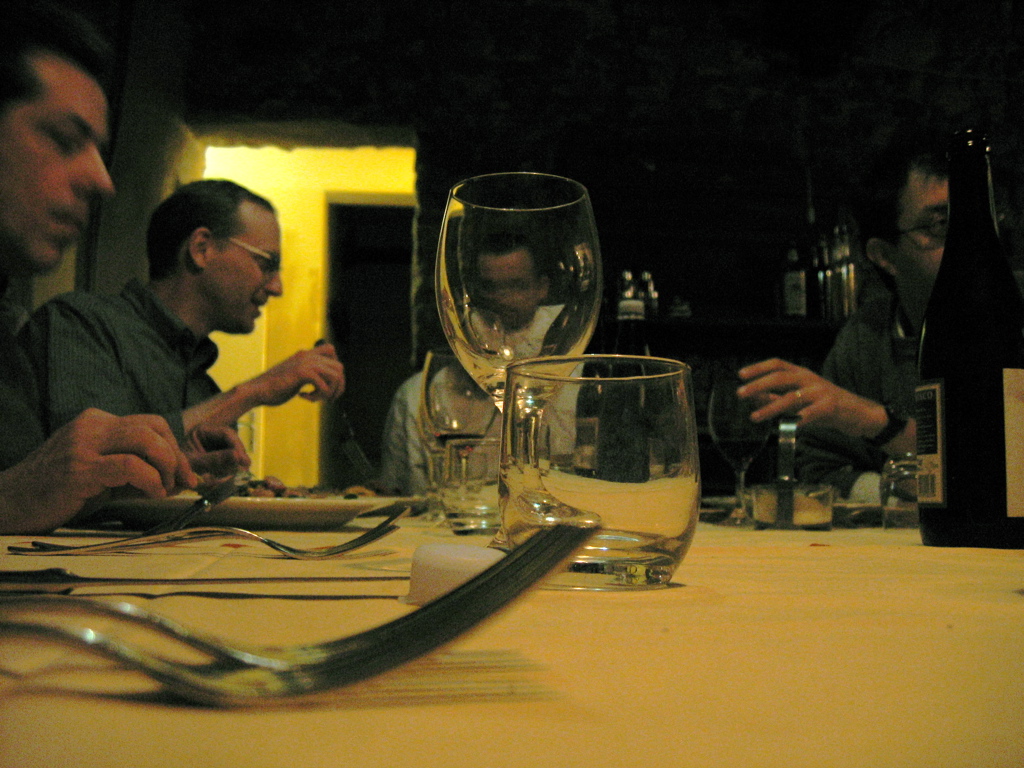
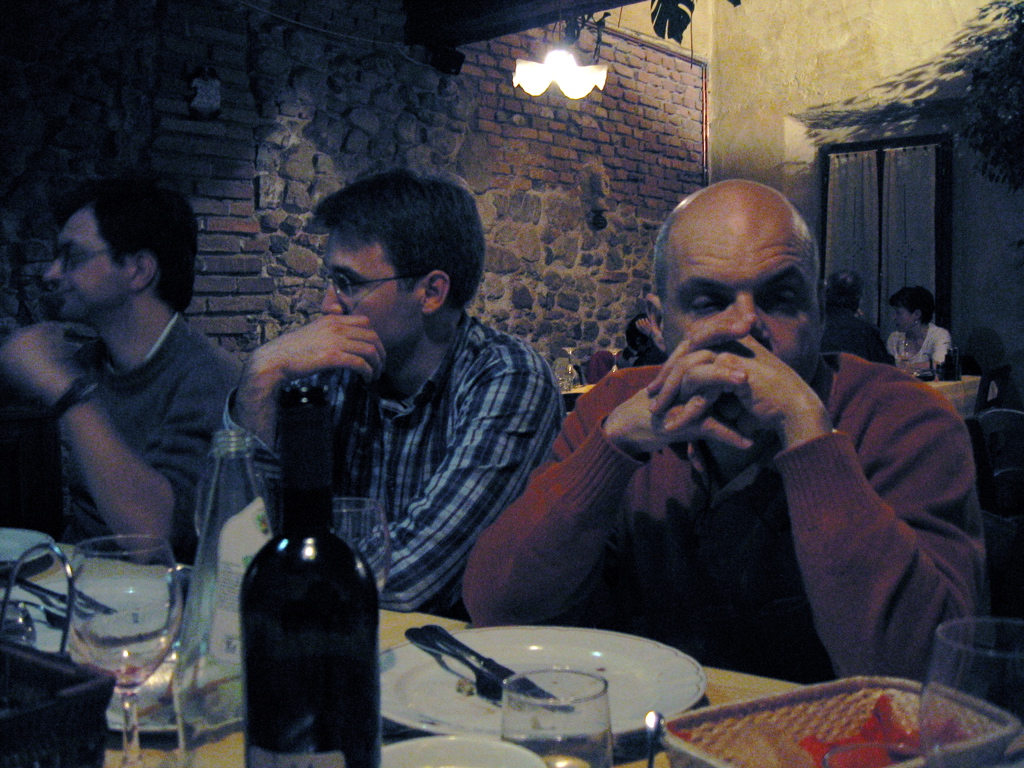
|
|

